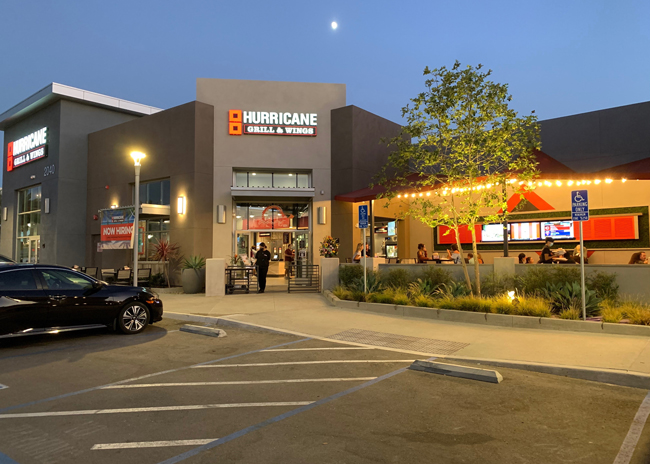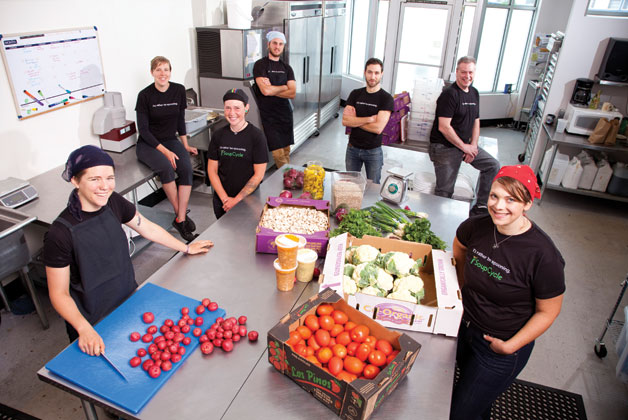Formerly CEO of Cosi, president of Long John Silver’s and CMO of Subway, Kevin Armstrong recognizes the benefits that good data can bring to the table, especially in times of rapid and dramatic change. Having worked in both executive and consulting roles since 1980, he’s now taking a deep dive into data analytics as the leader of King-Casey’s restaurant consulting team. Armstrong recently shared some thoughts on how data and the insights it yields will increasingly drive not just marketing and menu decisions but also design and development.
You see consumer patterns in retail impacting restaurant development and design. How so, and where do data analytics come in?
 Kevin Armstrong, King-Casey Consulting, www.king-casey.comKA: One of the macro changes we’re witnessing is the change in consumer retail shopping patterns away from brick-and-mortar stores toward online. There are a number of restaurant businesses that were built to take advantage of old retail habits — in many cases, to fit into the mall environment. What’s the answer for those brands if the environment that they’ve depended upon has changed? One company we worked with had operations in malls and also at test stores outside of malls. We were able to analyze the relative performance of their mall and non-mall locations. We also looked at consumer data about analogous types of restaurants operating outside of mall environments and at direct research in which consumers were asked what their likely purchase rate would be if they were to encounter this brand in a new environment and what factors might influence that rate. All of those types of data inform how that company can develop and design its concept to emerge in a new environment not dependent on rapidly changing consumer purchase behavior that is negatively impacting traffic.
Kevin Armstrong, King-Casey Consulting, www.king-casey.comKA: One of the macro changes we’re witnessing is the change in consumer retail shopping patterns away from brick-and-mortar stores toward online. There are a number of restaurant businesses that were built to take advantage of old retail habits — in many cases, to fit into the mall environment. What’s the answer for those brands if the environment that they’ve depended upon has changed? One company we worked with had operations in malls and also at test stores outside of malls. We were able to analyze the relative performance of their mall and non-mall locations. We also looked at consumer data about analogous types of restaurants operating outside of mall environments and at direct research in which consumers were asked what their likely purchase rate would be if they were to encounter this brand in a new environment and what factors might influence that rate. All of those types of data inform how that company can develop and design its concept to emerge in a new environment not dependent on rapidly changing consumer purchase behavior that is negatively impacting traffic.
If you think about design broadly, the implications for smarter, more data-driven approaches are profound and just beginning to be tapped. How else might data be used to drive design?
KA: A lot of concepts now are using a combination of menu boards along with presenting goods in retail-style, customer-controlled displays or cases arrayed along the path to order. Analyzing data to understand things like which products are most likely purchased from those cases, and in what combinations with items ordered from the menu boards, enables us to create the right design flow on how the cases are oriented or products presented. Or, say, a coffee concept is hoping to increase food sales to guests who typically just buy a regular coffee. We can study the data on customers who most often do buy food with a regular coffee. What do they buy? Do they order off the menu board or grab something within reach? Are they drive-thru customers that could be influenced there? Understanding the data can and should drive design and merchandising strategies.
Drive-thru signage is another example. People oftentimes don’t look at signage as design, but the application of real-time data through technology and menu board design can have a huge impact on the sales mix throughout the day and on add-on sales. In such cases, as in interior situations with things like self-order kiosks, the technology almost becomes a design element in helping to personalize the experience for guests, drive sales and generate valuable data.
Many operators are now designing with remote ordering and takeout in mind. Any advice to them on analyzing data before diving in?
KA: Don’t let design follow strategy without solid analytics. We suggest saying, ok, we need to serve two types of customers – dine-in and takeout. Let’s use some data to understand how those two groups want to be served, what their reality is, how many takeout customers there really are and if it’s enough to warrant dedicating design and labor resources to accommodate them.
The same goes for delivery. You don’t have to do much research to know what delivery customers want: They want the same quality that they get in the restaurant, and they want it in half an hour. Ease of ordering and convenience are one side of the equation, but customers also expect quality and ease of delivery. Analytically, we can look at the data and predict what an operator might have to do both on the front and back ends to be able to accommodate that. Then comes the strategic question of whether or not you want to do what the data tells you will be necessary to do.



